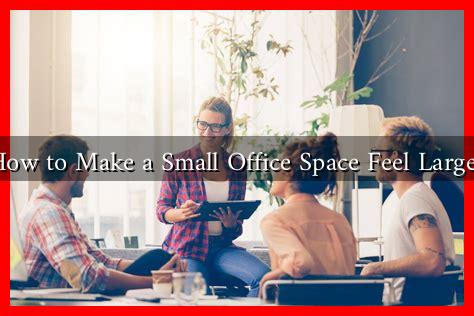-
Table of Contents
How to Make a Small Office Space Feel Larger
In today’s fast-paced work environment, many professionals find themselves working in small office spaces. Whether you’re in a home office, a co-working space, or a compact corporate office, the challenge of making a small area feel larger is common. Fortunately, there are several strategies you can employ to create an illusion of space, enhance productivity, and foster a more pleasant working atmosphere. This article explores effective techniques to make your small office feel larger.
1. Optimize Your Layout
The layout of your office can significantly impact how spacious it feels. Here are some tips to optimize your office layout:
- Use Multi-Functional Furniture: Invest in furniture that serves multiple purposes, such as a desk with built-in storage or a foldable table. This reduces clutter and maximizes functionality.
- Keep Pathways Clear: Ensure that there is enough space to move around. A clear pathway can make the area feel more open.
- Position Furniture Wisely: Place larger furniture against the walls to free up central space. Avoid blocking windows or natural light sources.
According to a study by the American Society of Interior Designers, a well-planned layout can increase productivity by up to 20%. Therefore, investing time in optimizing your office layout is crucial.
2. Choose the Right Color Palette
The colors you choose for your office can dramatically affect its perceived size. Here are some color strategies:
- Light Colors: Light shades such as whites, creams, and pastels reflect light, making the space feel airy and open.
- Accent Walls: Consider painting one wall a darker color to create depth while keeping the other walls light.
- Monochromatic Schemes: Using varying shades of the same color can create a seamless look that visually expands the space.
Research from the University of Texas suggests that color can influence mood and productivity, making it essential to choose a palette that not only feels spacious but also inspires creativity.
3. Utilize Mirrors and Glass
Mirrors and glass elements can create an illusion of depth and space. Here’s how to incorporate them:
- Mirrored Surfaces: Use mirrors strategically to reflect light and create the illusion of a larger area. A large mirror on one wall can double the visual space.
- Glass Furniture: Consider glass desks or shelves, which take up less visual space and allow light to pass through.
- Transparent Dividers: If you need to separate areas, use glass partitions instead of solid walls to maintain an open feel.
According to a study by the National Association of Realtors, homes with mirrors sell for 10% more than those without, highlighting the value of reflective surfaces in enhancing space perception.
4. Maximize Natural Light
Natural light can make a small office feel more expansive and inviting. Here are some ways to maximize it:
- Keep Windows Unobstructed: Avoid heavy drapes; instead, opt for sheer curtains that allow light to filter in.
- Use Light-Reflecting Surfaces: Incorporate glossy finishes on walls and furniture to bounce light around the room.
- Strategic Lighting: Use layered lighting, including task and ambient lights, to create a bright and welcoming environment.
According to the World Green Building Council, access to natural light can improve employee well-being and productivity by up to 15%.
5. Declutter and Organize
A cluttered space can feel cramped and overwhelming. Here are some decluttering tips:
- Regularly Purge Items: Set aside time each month to remove unnecessary items from your office.
- Use Storage Solutions: Invest in vertical storage options like shelves and cabinets to keep the floor space clear.
- Organize Digitally: Reduce paper clutter by digitizing documents and using cloud storage solutions.
According to a study by the Princeton University Neuroscience Institute, clutter can negatively impact your ability to focus, making organization essential for productivity.
Conclusion
Creating a sense of spaciousness in a small office is achievable with thoughtful design and organization. By optimizing your layout, choosing the right color palette, utilizing mirrors and glass, maximizing natural light, and decluttering, you can transform your workspace into a more inviting and productive environment. Remember, a well-designed office not only enhances your comfort but also boosts your efficiency and creativity. Implement these strategies today to make your small office feel larger and more functional.
For more tips on office design and productivity, check out resources from the American Society of Interior Designers.

